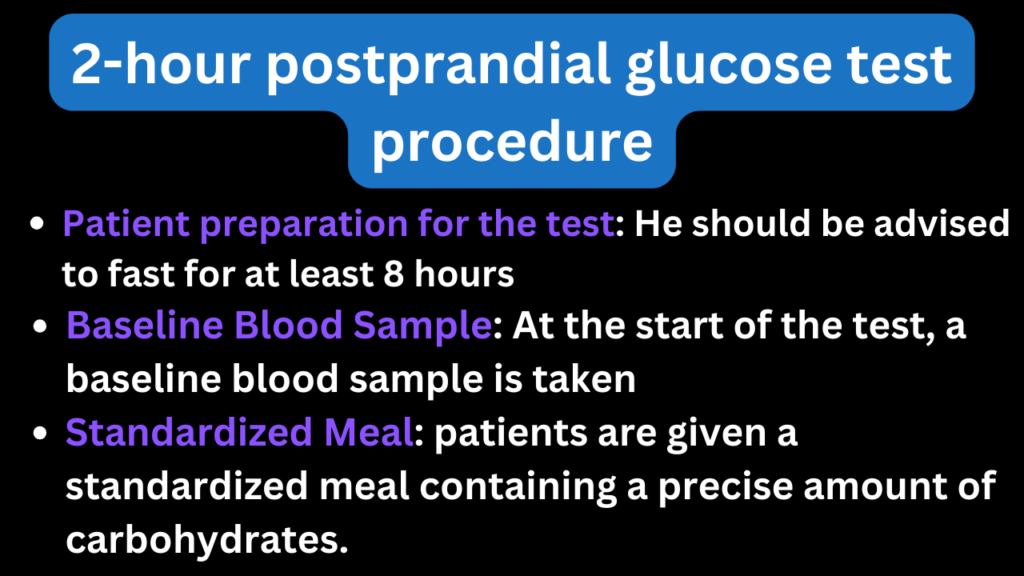Here you will learn about the “2-hour postprandial glucose test procedure”.
Managing blood glucose levels is crucial for individuals with diabetes and those at risk of developing the condition. The 2-hour postprandial glucose test is a valuable tool in assessing how well the body processes glucose after a meal.

This diagnostic test provides valuable information for healthcare professionals to tailor treatment plans and help individuals maintain better control over their blood sugar levels.
What is the 2-Hour Postprandial Glucose Test?
The 2-hour postprandial glucose test is a blood test that measures blood sugar levels two hours after consuming a standardized meal. Unlike fasting glucose tests, which evaluate blood sugar levels after an overnight fast, the postprandial test assesses the body’s ability to regulate glucose after eating.
2-hour postprandial glucose test procedure
1. Patient preparation for the test
Patients are typically advised to fast for at least 8 hours before the test. This means abstaining from food and beverages, except water, during this period.
NOTE: It’s important to inform healthcare providers about any medications being taken, as some medications may affect test results.
2. Baseline Blood Sample
At the start of the test, a baseline blood sample is taken from the patient. This sample serves as a reference point for comparison with the postprandial blood sugar levels.
3. Standardized Meal
After the baseline blood sample, patients are given a standardized meal containing a precise amount of carbohydrates. This meal is designed to mimic a typical dietary intake and allows healthcare providers to assess how the body responds to glucose in a controlled setting.
4. Wait Period
After consuming the meal, patients are instructed to remain at rest, avoiding any vigorous physical activity. This two-hour waiting period allows healthcare professionals to observe how the body metabolizes glucose during the postprandial phase.
5. Postprandial Blood Sample
After the two-hour wait, a second blood sample is taken to measure blood glucose levels. This sample reflects how effectively the body processes and utilizes glucose after the consumption of food.
2-Hour Postprandial Glucose Test Result Interpretation
Interpreting the results of a 2-hour postprandial glucose test is crucial for understanding how well the body is handling glucose after a meal.
1. Normal Range
A normal result typically shows blood glucose levels returning to baseline or slightly elevated but within an acceptable range two hours after consuming the standardized meal. Normal values vary, but a common target range is often considered to be below 140 mg/dL.
2. Impaired Glucose Tolerance (IGT)
Elevated blood glucose levels between 140 mg/dL and 199 mg/dL at the 2-hour mark may indicate impaired glucose tolerance. This condition suggests that the body is struggling to handle glucose effectively and is often considered a precursor to diabetes.
3. Diabetes Diagnosis
Blood glucose levels equal to or exceeding 200 mg/dL at the 2-hour mark are indicative of diabetes. This result suggests a significant impairment in the body’s ability to regulate blood sugar levels.
4. Insulin Resistance
In some cases, even if the 2-hour postprandial result falls within the normal range, healthcare professionals may consider other factors, such as fasting glucose levels or insulin resistance. Elevated fasting glucose levels or other clinical indicators may warrant further investigation.